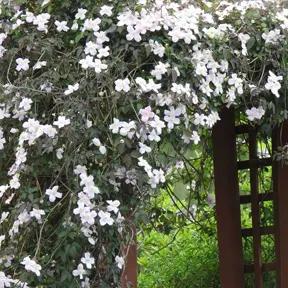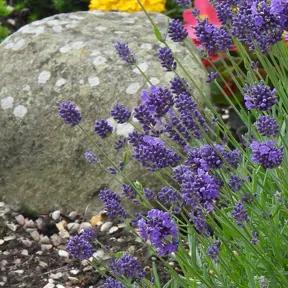Gwendoline Sweet Pea Seedlings
- Colour: pink & white
- Stem: extra long
- Height: 2.4 m
- Type: Spencer
- Scent: medium
- Flowering: June - August
- Planting Months: March-June
- RHS Award of Garden Merit
Description
Lathyrus odoratus Gwendoline
A sweet pea of enormous popularity with good reason, Gwendoline has enormous flowers that are white with a deep rose pink border that fades into the centre. Its undulating petals create a frilly effect, not least because there are so many of them. They are balanced by extra-long straight stems that are strong and enable this vigorous sweet pea to climb to over 2m if necessary. As a Spencer sweet pea, she is fragrant without being overpowering.
Browse our other Sweet Peas, or all of our Bedding Plants.
Our Sweet Peas are delivered in purpose-designed, recycled cardboard packaging, and are ready to be planted out when you get them.
We generally send them out between March and May, but we will email you with the likely delivery timescale once you have placed your order.
Growing Gwendoline Sweet Peas
Budding exhibitors at their local show should definitely invest in a Gwendoline to impress the bench. Her flowers fulfil all the technical requirements of the sweet pea expert while her verve and swagger are tremendously exciting. For ordinary mortals, a bunch of Gwendoline mixed with some sprigs of clary sage or blue flowered rosemary would be a delight on a bedside table. The pink and white colouring stands out against darker sweet peas like the excellent and recent cutting flower sweet pea, Magnificent Maroon or complements the shocking pink of Millennium.
Features
- Colour: pink & white
- Stem: extra long
- Height: 2.4 m
- Type: Spencer
- Scent: medium
- Flowering: June - August
- Planting Months: March-June
- RHS Award of Garden Merit
Planting Instructions
Sweet Peas do best in well worked, moisture retentive soil. Adding organic matter really makes a difference and is best done the autumn before. But on the day is very much better than not at all. Your plants will do best in open ground, but you can get good results planting Sweet Peas in window boxes and pots of sufficient size - allow at least 3 litres per plant and remember that these are quite deep-rooted plants. In containers, the ideal planting mix is 50% compost, 40% topsoil and 10% well-rotted manure. Ordinary potting compost is OK, but you will get fewer flowers.
A range of supports can be used from twiggy branches to willow wigwams to posts with netting stretched between. Whatever you use, do the construction work before planting. Think about the position - Sweet Peas can cope with a little shade but flower better in full sun.
Space plants about 30 cm apart and about 5 cm from their supports. The hole should be deep enough to plant the full length of the rootball and allow enough so the soil finishes level with the lowest pair of leaves. Check to make sure they are climbing well every week or so, as they grow quickly. Tie into their supports if not.
Sweet Peas biggest need is for water - they are incredibly thirsty plants. So water well after planting and make sure they never completely dry out. They are greedy too so you will lengthen their flowering period if you give them a high potash and phosphate fertiliser every 7-10 days once buds begin to form. Home-made comfrey liquid is perfect or Tomorite will do - especially if you are on a sandy soil.
Cut the flowers as they develop pick them, otherwise they run to seed and stop flowering.
Did You Know?
Silas Cole was a gardener who worked for the Spencer family at Althorp in the early 20th Century. His passion was sweet peas, and it is down to him and his skill in breeding new varieties of sweet pea that the fashion moved from the small, fragrant and old-fashioned to these large, frilly and long stemmed varieties. The first Spencer Sweet Pea was Countess Spencer.
Awarded an RHS AGM in 1998.
It's Summer Planting Season 2025

Pot Grown & Plug Plants Delivered

Direct from the Nursery Value

No more broken plants in the post!











